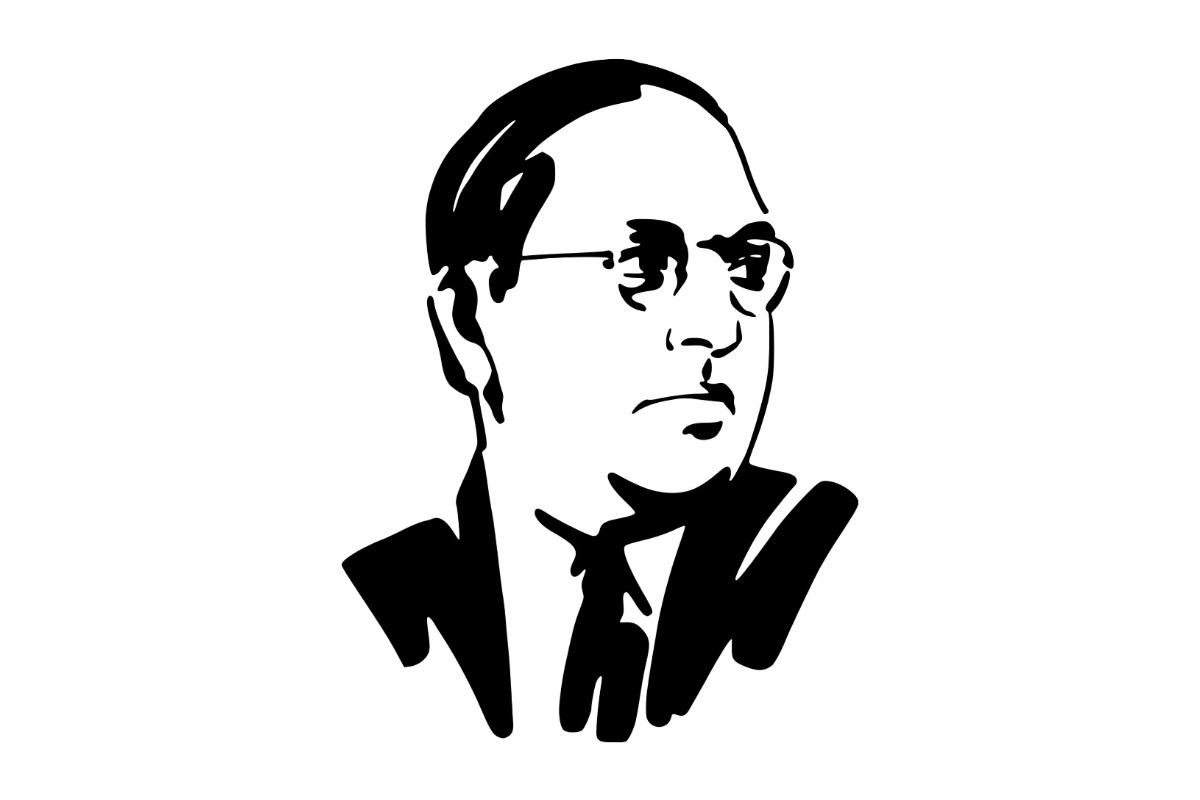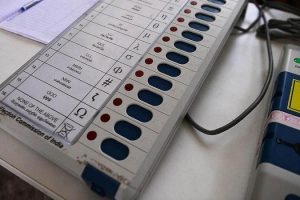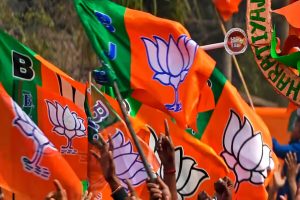The gang-rape incident of a Dalit woman in Uttar Pradesh’s Hathras district had brought to many the chilling memory of the Nirbhaya case. However, more than the barbarity of the crime in Bhoolgarhi’s millet field on September 14, 2020, it was the impunity which followed from the UP administration’s end that shocked many beyond their belief.
After seeing her – allegedly gang-raped by four men belonging to the upper caste Thakur community – lay unconscious in the field, her family had immediately taken her to the local Chandpa Police Station.
Reportedly, the police not only refused to entertain the Dalit family’s claim but subjected them to severe humiliation before banishing then away. On the same day, the victim, 19, was taken to the Jawaharlal Nehru Medical College and Hospital in Aligarh where she was found to have suffered a strangulated neck at the hands of her perpetrators.
According to the police, who registered a complaint on September 20, she had been strangled with her dupatta. The police recorded her first statement two days later on September 22 and arrested the four accused.
The woman succumbed to her injuries a week later on September 29. On October 1, the police rubbished her family’s claim and said that no rape had occurred, citing the “FSL (Forensic Science Laboratory) report didn’t find sperm”. This, despite videos from September 14 emerging where she could be seen naming the four accused and saying they did ‘zabardasti‘ with her.
In between, the UP administration’s high-handed approach in cremating her at the dead of the night on September 29 without her family’s consent had already created a public outrage throughout the country.
Starting with her incineration, each day witnessed one brazen event after another. However, what overtook everything was the panchayat meeting by the local upper-caste populace in support of the accused.
They not only denied the criminality of the four Thakur men but demanded a narco-analysis test of all the parties involved, including the victim’s family, to “reveal the truth about the incident”. And much to the surprise of many, the Yogi government ordered one as well.
While all these indemnities saw the national media drawing comparison of this incident to the Nirbhaya gangrape of 2012, many women’s and Dalit rights activist have not bought this generalisation.
According to them, and rightly so, Nirbhaya’s family was not subjected to the kind of humiliation that the 19-year-old Dalit’s family had been undergoing. Unlike the Delhi gang-rape case of December 2012, the incident in Hathras was not just one of the 87 rapes that occur every day in this country, many claimed.
What happened in Bhoolgarhi was also one among the 125 daily reported crimes against Dalits, and a look into numbers surrounding Dalit lives may help in understanding what took place on September 14 and why it was followed by a line of barefaced and presumptuous events.
A categorical reading of a few reports and surveys by academics, scholars and government committees reflects the systematic and institutional discrimination that a Dalit or an Adivasi in India endures right from her/his birth.
According to the findings of the fourth National Family Health Survey (NFHS- 4), conducted between 2015 and 2016, among children below the age of five years, one belonging to the SC/ST community stands at a higher risk of being underweight, stunted and thin. In normal terms, a lower caste child is more likely to be malnourished than his upper-caste or general caste counterpart.
The NFHS- 4 survey released in 2018 found that in the Scheduled Caste communities, 42.8 per cent of the children below the age of five are stunted. The number rises to 48.3 in the Scheduled Tribe communities. 38% of general caste children below five years are stunted.
In “Thin” and “Underweight” categories as well, the children of the SC/ST background stand at the bottom end of receiving the several development and welfare policies that have been introduced in the 73-year-old history of independent India.
The prevalence of Anaemia (lower levels of haemoglobin in the blood) is also higher in backward communities’ children as they are affected by it more than the national average of 58. The rate of anaemia among SC and ST children are 60.5 and 63.1. Among general category children, the number is 53.9.
One way to understand the increased malnutrition among lower caste children is to look into another study by the Medical Journal of The Armed Forces in 2011. It had stated that a child’s nutritional status was directly linked to the parents’ literacy rate. The higher the education among parents, the more food a child intakes.
As per the report, 35.8% of boys and 35.1% of girls who were found underweight had illiterate fathers, in comparison to 16.3% boys and 22.8% with fathers who had either college or high secondary school education.
According to the 2011 census data, the literacy rate among the upper caste Hindus is 73.27%, more than the national average of 72.98. Among the Scheduled Caste community, it is 66.07%.
Overcoming this barrier at the very primitive stage of their lives, the Dalit children coming into the primary education are faced with yet another fundamental crisis – the higher probability of being a school dropout.
A UNICEF report in 2011 found that 51% of Dalit children drop out of elementary schools. The number went up to a staggering 67% among Dalit girls. It stood at 37% among non-Dalit and non-Adivasi children.
In an attempt to figure out the prevailing cause of higher dropout rates among the lower caste children, the National Dalit Movement for Justice (NDMJ), in its Exclusion in Schools: A Study on Practice of Discrimination and Violence found:
• SC children (especially girls) are forced to do menial jobs. They are forced to clean toilets and other school premises
• Bathrooms are not used by the students but the teachers make the SC children clean them
• Teachers make only the SC children to clean their utensils and many times they were asked to fetch water, tea etc
• SC children are subjected to caste abuse from the peer group and school staff
• Caste Hindu students don’t make friendship with the SC children
“Not only these, but the children are discriminated in terms of seating arrangements, in terms of giving food. They are asked to sit in a separate place to eat,” said Dr.V.A. Ramesh Nathan, General Secretary, NDMJ. “There are several other forms of discrimination that Dalit children face, including sexual abuse.”
The tendency could be traced in higher education as well. Ministry of Human Resource Development (MHRD) in 2019 showed that among the 2,461 dropouts from the IITs in the last two years, 1,171 (47.5%) were either from SC, ST or OBC background.
Of the 99 dropouts of Indian Institutes of Management (IIMs), 14 were from SC, 21 from ST category and 27 from OBC category, the HRD Ministry data highlighted.
While decades of institutional ostracism has led them to a life at the lowest end of the socio-economic spectrum, the higher dropout rate worsens the situation further.
Resorting to casual and informal works, thus, becomes one of the most looked-after options among the lower caste populace, resulting in a highly wobble livelihood as witnessed during the first month of the COVID-19 imposed lockdown in India.
According to figures provided by the National Sample Survey (NSS), 2011/12, 47.2% employed SC population are casual workers, while only 15.9% are regular salaried workers. In upper caste communities, 29.7% have regular-salaried jobs, with only 12.4% doing causal jobs.
Another major hindrance that affects the well-being of backward communities is judicial discrimination. While two of the three crimes committed against someone belonging to the backward caste is likely to get lost in the files of Indian judiciary, the paradigm shifts when a Dalit stands accused.
The conviction rates in offences under the SC/ST Atrocities Act was just 32%, as per the NCRB data, 2019. The number was above 50% for cases registered in general under the Indian Penal Code (IPC).
“Reservation is there only up to district-level courts. But there is no such thing in higher judiciary. It’s very rare for a Dalit to become a High Court judge or a Supreme Court judge. They think Dalits don’t have that merit to occupy those positions,” said Dr. Ramesh Nathan of NDMJ, linking the low conviction rate in SC/ST Act directly to the lesser number of Dalit judges in the higher judiciary.
However, one may see a stark difference when the offender is from the backward communities. Almost two in every three (64%) inmates awaiting trials were either SC, ST or OBC.
“There were particular SC and ST communities who were treated as habitual offenders before 1947 under specific Acts. Even though such provisions are not there in independent India, the police mindset hasn’t changed much. They fabricate cases against Dalits and Adivasis to keep them inside [the prison],” Dr. Ramesh Nathan asserted.
“Many prisoners languish in prisons because the police do not finish the investigation and file the charge sheet in time. This is a very serious matter because such people remain in prisons without any clue of a police case against them,” NDMJ found in its Study on discrimination against Dalit and Adivasi Prisoners & Victims of Police Excesses.
“There are also issues of ‘unjustified or unnecessary’ arrests that police officials often resort to demonstrate the progress of investigation in counter cases fled by the dominant castes. Section 167 of Cr.P.C. lays down the maximum period within which the police investigation must be completed and a charge sheet filed before the court,” the study further revealed.
“Look at the contradiction here. If the non-Dalits commit a crime they can come out, whereas Dalit Adivasis are forced to spent years in prison,” said Dr. Ramesh Nathan.
It becomes worse when a Dalit woman is a casualty. Among all the crimes against them, the conviction rate in rape is abysmally low at less-than-2 per cent in comparison to the overall rate of 27.8%, as per the NCRB data, 2019. Thus, the Uttar Pradesh government’s state of exemption in the Hathras incident was not appalling but extending the trend.
Breaking the institutionalised shackles of caste-based discrimination at every stage of their life has been a taxing task for the SC, STs and OBCs. And it reflects in their socio-economic status in the society.
According to World Inequality Database’s Wealth Inequality, Class and Caste in India, 1961-2012, published in 2018, India’s upper caste households earn nearly 47% more than the national average annual household income.
Households belonging to the marginalised caste groups, on the other hand, earn less than the national annual income of Rs 1,13,222. While an SC family earns 21% less than the national average, the number is 34 and 8 for STs and OBCs respectively.
Yet, there are many who defy the systematic discrimination at every stage daily and continue on their quest to a dignified life.
However, that a dignified life did not bring with it an undiscriminating life was evident when Maroona Murmu, Associate Professor of History at Jadavpur University of Kolkata was racially attacked for an online post.
Alleging that they took the easy way of reservation, Dalits and Adivasis being shunned out of the highest strata of the society based on their caste is a common phenomenon.
Availing reservation, though, is not the easiest of the tasks as speculated by many in the upper-caste communities.
An RTI by activist Sabyasachi Mukherjee in July this year revealed that the reserved sections of categories ‘Group A’, ‘Group B’ and ‘Group C (excluding Safai Karmacharis)’ in government job sectors are never filled to their actual capacity.
While the Constitution of India directs 49% reservation in jobs, Group A currently has 32.3% employees belonging to either the SC, ST or OBC communities. The number stands at 39.7 in Group B and 48.6 in Group C (excluding Safai Karmacharis).
A sharp imbalance is noticed in the case of Group C (safai karmacharis). The representation of the SCs, STs, and OBCs here is a flabbergasting 66.5%. Thanks to the safai karmacharis, the backward communities’ overall representation in government jobs is 47.5%, Mukherjee’s RTI revealed.
“There is a reservation in the mind of upper-caste people. It cannot be countered with logic. There is a curfew in their mind and they just don’t want to understand. I have been trying to make rational arguments but they just don’t want to understand,” Professor Murmu said.
“As a scholar, I talk about caste violence that is there, the stigma, trauma and humiliation that people of the backward communities face. But everything in counter of them translates into the reservation. The moment one talks about caste, the upper caste people drag reservation,” she added.
Getting a doctorate from the prestigious Jawaharlal Nehru University and teaching at Jadavpur University should usually be regarded as a highly successful academic career.
However, despite achieving all of these, Professor Murmu’s experience of being subjected to racial discrimination and abuse has led her to trauma of a different kind, which she feels is experienced by many like her but understood by none with an upper-caste background.
“The sort of mental trauma that I’m going through at the moment, the sort of life that I’ve to lead at the moment, how do I make people understand about it? These are the wounds that we bear in our bodies and our minds,” she said.












